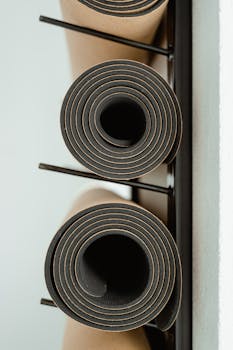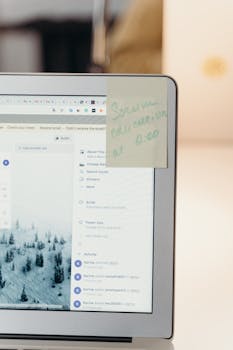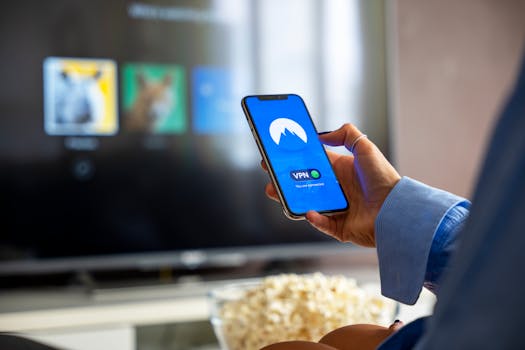Wellness
Best Mindfulness Tools to Stay Focused Throughout the Day
Explore the best mindfulness tools for staying focused and balanced throughout your day. Learn practical routines, compare top apps, and find actionable tips for lasting wellness with every routine.
Advertisement
Some afternoons feel like a blur, with emails, calls, and alerts overlapping. If you’ve ever wished to stay present and calm, mindfulness tools can quietly anchor your attention and help you refocus right where you need it.
Many people struggle to maintain steady concentration at work or at home. Distractions pull minds in every direction. The right blend of mindfulness tools integrates modern wellness with daily routines, offering proven ways to break the cycle and find clarity.
This article explores actionable approaches and specific mindfulness tools that support your focus, emotional balance, and productivity. Dive in to discover practical steps, detailed comparisons, and useful techniques for everyday mindfulness in the US.
Bringing Mindfulness Tools Into Your Routine for Tangible Focus Gains
Incorporating mindfulness tools into your everyday habits creates reliable mental checkpoints. Instead of reacting to every distraction, you’ll notice when your mind begins to wander and gently return to your task.
Setting aside just five minutes twice per day with these tools leads to real changes. For instance, a guided app session after lunch shifts your body language from restless to relaxed, helping you focus on calls or creative work with renewed energy.
Scheduling Check-Ins to Prevent Drifting Attention
Use mindfulness tools to schedule personal check-ins throughout the day. A notification prompts a breathing pause mid-morning—”Take three deep breaths, soften your shoulders.” This quick reset helps you check in with yourself before returning to your plan.
Pairing reminders with intentional pauses reduces fidgeting or frustration. Many people find that simply pausing before opening emails makes every following action more deliberate, reducing mistakes from rushing.
It’s like setting small road signs for your brain. When you see or hear your reminder, check your breath and surroundings: are you tense or distracted? Copy this little script, “Pause, breathe, choose next step.” Feel the difference as you continue.
Practicing Micro-Mindful Moments for Immediate Clarity
Integrating brief mindful practices sharpens your awareness between tasks. Mindfulness tools featuring mini body scans let you scan tense spots—jaw, shoulders, hands. Carrying this aware posture into a meeting leads to clearer communication and active listening.
Adding one-minute visualization exercises to transitions, like picturing your inbox as a stream, helps reduce overwhelm. Each visualization offers a concrete reset and creates space for focused progress.
You may realize, “My jaw is clenched and I’m leaning in.” Relax your muscles, look away from the screen, and process your next move intentionally with the support of your favorite mindfulness tools.
| Tool Name | Main Feature | Cost Range | Best Use | Actionable Takeaway |
|---|---|---|---|---|
| Meditation Timer | Customizable sessions with alerts | Free–$10 | Dedicating fixed minutes to reset focus | Try a five-minute midday session as a pick-me-up |
| Guided Breathing App | Adjustable breathing patterns | Free | Regaining calm after meetings | Use before difficult calls for steadying nerves |
| Gratitude Journal App | Daily reflection prompts | $0–$5/mo | Building positive outlook daily | Write three things each evening, feel lighter before sleep |
| Focus Audio Tracks | Ambient sounds and music | Free–$12/mo | Reducing external noise, enhancing focus | Play during deep work periods to limit distractions |
| Habit Tracker | Reminders for routines | Free–$8/mo | Building consistency in your practice | Set recurring reminders for mindful check-ins |
Minimizing Digital Distractions Using Mindful App Settings
Adjusting app notifications and phone settings is one of the first practical steps to create mental space using mindfulness tools. Pinpointing which alerts truly matter helps you manage energy and attention more predictably each day.
Turning off nonessential notifications frees your mind from unnecessary pings, allowing mindfulness tools to shine during true break times. For example, a calming sound app only triggers at designated intervals to prompt a restorative pause.
Creating an Environment That Promotes Mindful Choices
Use a “Do Not Disturb” setting for blocks of focused work, then dedicate a few scheduled minutes to engage with mindfulness tools. This lets you move from digital hustle to intentional calmness without missing priorities.
Temporarily moving attention away from constant checking can make focused time feel much longer and more productive. After each period, notice the sense of real accomplishment versus scattered multitasking.
- Enable app-specific “focus” modes—limit access to only mindfulness tools during work blocks for predictable routines and fewer random pop-ups.
- Set custom sound profiles—a soft chime can remind you to pause, while louder tones signal only urgent messages, minimizing adrenaline spikes from constant noise.
- Group wellness-related apps on your home screen—seeing mindfulness tools first inspires healthier choices and keeps your motivation visible throughout the day.
- Use widgets for quick access—placing breathing exercise links or timers a tap away encourages you to use your selected practice spontaneously.
- Establish silent evening hours—reducing blue light and stimulating sounds signals the transition to wind-down, leveraging digital habits for restful routines.
Structuring digital space enhances your chances of using mindfulness tools rather than falling back into endless scrolling. Returning to a calm mindset takes less effort when your environment supports your goals.
Building Personal Protocols for Device Use
Create a simple rule for yourself: “Only touch my phone for wellness checks every two hours”. Sticking to this habit requires intention but pays off in sustained focus and reduced digital tension.
Let family or close coworkers know about your new routine so they support your boundaries. Sharing your plan reduces guilt for not responding instantly and makes your wellness journey more transparent.
- Announce phone breaks to colleagues to avoid misunderstandings and reinforce the habit.
- Turn off message previews so only urgent items catch your eye until your scheduled check-in.
- Write a cue post-it like, “Am I here? Take one deep breath” near your screen to reinforce mindful pauses.
- Reward yourself after maintaining your protocol for a week with extra downtime or a special meal.
- Adjust as you go—keep what works, drop what doesn’t, until the use of mindfulness tools feels natural and beneficial.
Clear personal protocols make the difference between reactive phone use and empowered, intentional actions with technology each day.
Staying Present With Mindfulness Tools: Breaktime Practices You Can Try
Slipping in short mindful breaks during your day keeps your mind from fatigue and refreshes your perspective. These practical routines adjust easily to your real schedule and don’t demand unrealistic time investments.
Using Movement to Reset Attention During Breaks
Small movement breaks, guided by mindfulness tools like stretch reminders, unlock physical tension and clear mental cobwebs. For instance, stand up, stretch your arms overhead, rotate your neck, and notice the breath. You can return to your desk alert and more focused.
Movement cues can include walking to fill your water bottle, gently shaking out your hands, or pacing around your room. Pair each action with a mindful breath to reinforce the mental reset and avoid letting breaks turn into mindless phone scrolling.
Some tools offer short instructional videos for simple desk stretches or grounding techniques. Pick one sequence, follow along, and say to yourself, “I’m right here, body and mind connected, ready for the next stretch of work.” Feel how present you’ve become.
Rebooting Your Senses With Simple Sound or Visual Cues
Battle afternoon drag by mixing in brief mindful listening. Mindfulness tools with gentle soundscapes—like rain or forest backgrounds—let you close your eyes and listen for every layer of sound, drawing your attention away from stress.
Switching on a visual relaxation app, even for two minutes, changes your internal language from, “I’m stuck, I can’t focus,” to, “I’m here, witnessing change.” Models that provide slow-moving imagery or breathing guides help you reconnect with a still mind.
Try, “Press play, close your eyes, notice your breath and the sound for three minutes.” Repeat this in the elevator or waiting room whenever you catch yourself ruminating or tensing up. Mindfulness tools help recenter your senses and lift lingering tension.
Tracking Progress With Mindfulness and Habit Data
Measuring your practice using mindfulness tools converts vague intentions into solid routines. By watching your consistency and growth, staying motivated becomes easier and setbacks less discouraging.
Seeing Growth on Your Personal Focus Chart
Tracking your check-ins, breathing exercises, or journaling entries reveals actual improvements through concrete data. Most mindfulness tools show charts or stats—like “Streak: 5 days” or “Total meditations: 10 this month”—giving motivation in real time.
Each milestone is more than a number. If you notice your moods trending better on days you use a certain tool, reference it as proof that the routine pays off. This shifts your self-talk from “Is this working?” to “I’m making progress that I can see!”
Pairing results with a mini-journal entry—”Today I felt less anxious after morning breathing”—helps reinforce the connection between action and outcome. Use this concrete feedback to refine which mindfulness tools get you the best results.
Celebrating Wins and Learning From Lulls
Learning from gaps in your data is just as powerful. Maybe you missed your mindfulness practice on days with more stress or unexpected meetings. Instead of shame, use this as data to reprioritize pauses tomorrow.
Acknowledge each small win, like three mindful check-ins, no matter how imperfect the week. Share these milestones with a friend for encouragement—”I stuck with my practice during a tough project.” Watch your motivation grow bit by bit.
Lulls help you tweak your approach, not give up. Update reminders, switch to shorter exercises, or anchor your practice to meals. Mindfulness tools support steady learning, not just perfection, making wellness a journey you enjoy.
Everyday Wellness Grows With the Right Mindfulness Tools
Small investments in mindfulness tools create big returns over time. Using daily reminders, movement breaks, and progress trackers steadily trains your mind to manage stress, return to focus, and savor moments of genuine peace during busy schedules.
Practical steps—like customizing notifications, building device protocols, or checking progress—anchor your routine in reality, not wishful thinking. These wellness techniques fit every lifestyle, offering real value whether you’re spending your days in meetings or caring for family.
By choosing and adapting mindfulness tools for your needs, you’ll see focus improve and resilience grow. Remember, consistency counts more than perfection. Start small, notice each positive shift, and enjoy the cumulative impact on your everyday wellness journey.
Trending Topics

How to Improve Sleep Hygiene with Mobile Tools
Strengthen your sleep hygiene with mobile tools that manage bedtime habits and improve nightly rest quality.
Keep ReadingYou may also like

Yoga Apps That Guide Beginners with Simple Daily Sessions
Improve flexibility and calm with yoga apps that guide beginners through simple daily sessions at their own pace.
Keep Reading


